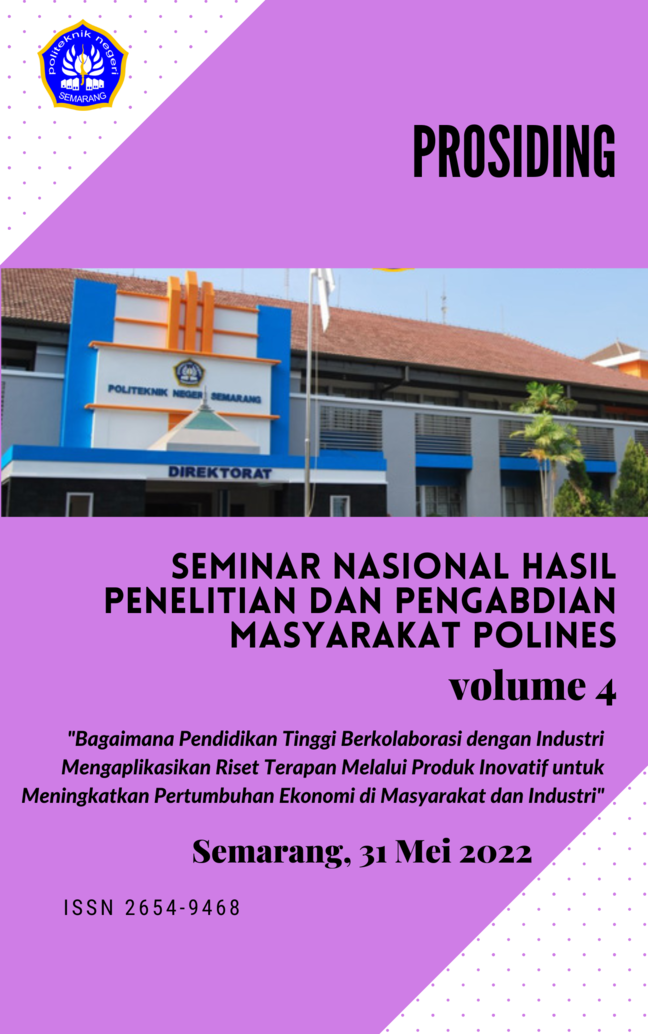PROTOTYPE ASISTEN NAVIGASI DALAM RUANGAN UNTUK TUNANETRA BERBASIS SMARTWATCH DAN iBEACON
Keywords:
Smartwatch, iBeacon, Speech Recognition, Text to SpeechAbstract
Most normal people get a lot of information by looking. Not a few people who have limitations in their visuals who need help to move in the room. People with visual disabilities or visual impairment are divided into two types, namely blind and low vision. Visual impairment is a condition in which humans cannot see the surroundings as a whole. While low vision is a situation where people can still look around even though they are not too worried or have limitations at a certain distance. But from this problem, there is no tool for directional guidance that makes it easier for them to move inside the house. This study takes the formula of the problem of visually impaired people who want to move to another room in their home. The purpose of designing this indoor navigation application is to help people with visual impairment in tracking the position and knowing the location of the room in the house. From the results of research the application can run on android smartwatches and can navigate the visually impaired also provide the right direction to the intended room. The more transmitters used will be more accurate the initial positioning or after running. From a survey conducted in the use of the application, it was found that 87.6%, which means that users feel satisfied with the results of the application. The more transmitters used, the more accurate the initial positioning or after app running.
References
Corna, A., Fontana, L., Nacci, A. A., & Sciuto, D. (2015). Occupancy detection via iBeacon on Android devices for smart building management. Proceedings -Design, Automation and Test in Europe, DATE, 2015-April(April), 629”“632. https://doi.org/10.7873/date.2015.0753
Duong, N. S., & Thi, T. M. D. (2021). Smartphone Indoor Positioning Based On Enhanced BLE Beacon Multi-Lateration. Telkomnika (Telecommunication Computing Electronics and Control), 19(1), 51”“62. https://doi.org/10.12928/TELKOMNIKA.V19I1.16275
Handojo, A., Octavia, T., Lim, R., & Anggita, J. K. (2020). Indoor Positioning System Using BLE Beacon to Improve Knowledge About Museum Visitors. Telkomnika (Telecommunication Computing Electronics and Control), 18(2), 792”“798. https://doi.org/10.12928/TELKOMNIKA.v18i2.14886
Hoa, J., & Soewito, B. (2018). Monitoring Human Movement in Building Using Bluetooth Low Energy. CommIT (Communication and Information Technology) Journal, 12(2), 125”“133. https://doi.org/10.21512/commit.v12i2.4963
Jamaluddin, J., Nugroho, A. T., & Maulina, W. (2019). Rancang Bangun Indoor Positioning System berbasis Wireless Smartphone menggunakan Teknik Global Positioning System dengan Metode Absolut. Berkala Sainstek, 7(1), 13. https://doi.org/10.19184/bst.v7i1.9914
Justicia, L. T. (2017). Rancang Bangun Aplikasi Messaging Berbasis Voice Interaction Bagi Penderita Tunanetra Pada Sistem Operasi Android. Jurnal Pengembangan Teknologi Informasi Dan Ilmu Komputer, 1(7), 620”“627.
Liu, H. H., & Liu, C. (2018). Implementation of Wi-Fi Signal Sampling on an Android Smartphone For Indoor Positioning Systems. Sensors (Switzerland), 18(1). https://doi.org/10.3390/s18010003
Patel, P. N., Patel, J. K., & Virparia, P. V. (2013). Generating Select Query from Spoken Words on Android Smart Phone SEARCH AND ANDROID VOICE. 2(3), 91”“94.
Satan, A. (2018). Bluetooth-based indoor navigation mobile system. Proceedings of the 2018 19th International Carpathian Control Conference, ICCC 2018, May 2018, 332”“337. https://doi.org/10.1109/CarpathianCC.2018.8399651
Sukreep, S., Nukoolkit, C., & Mongkolnam, P. (2020). Indoor Position Detection Using Smartwatch and Beacons. Sensors and Materials, 32(2), 455”“473. https://doi.org/10.18494/SAM.2020.2386






